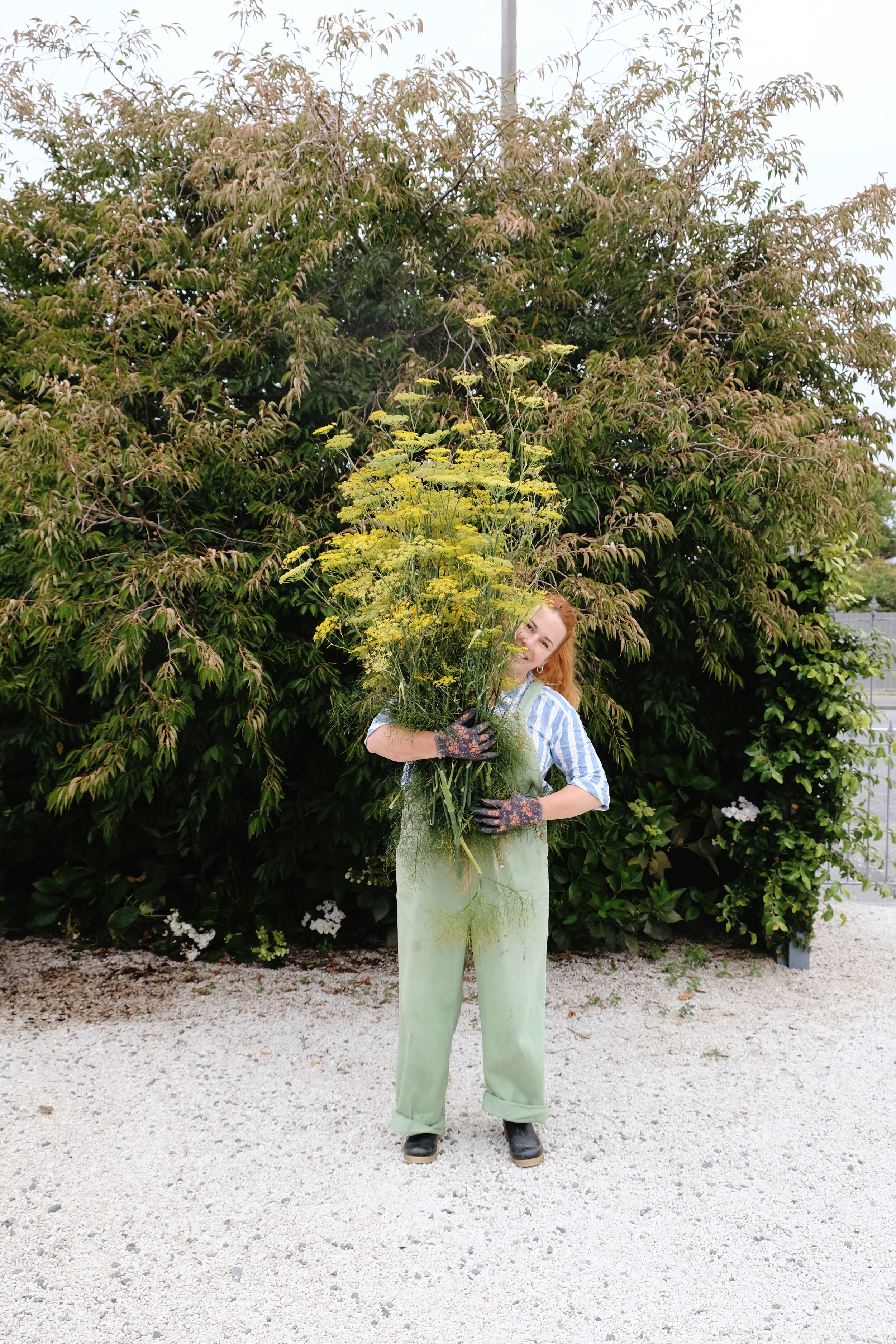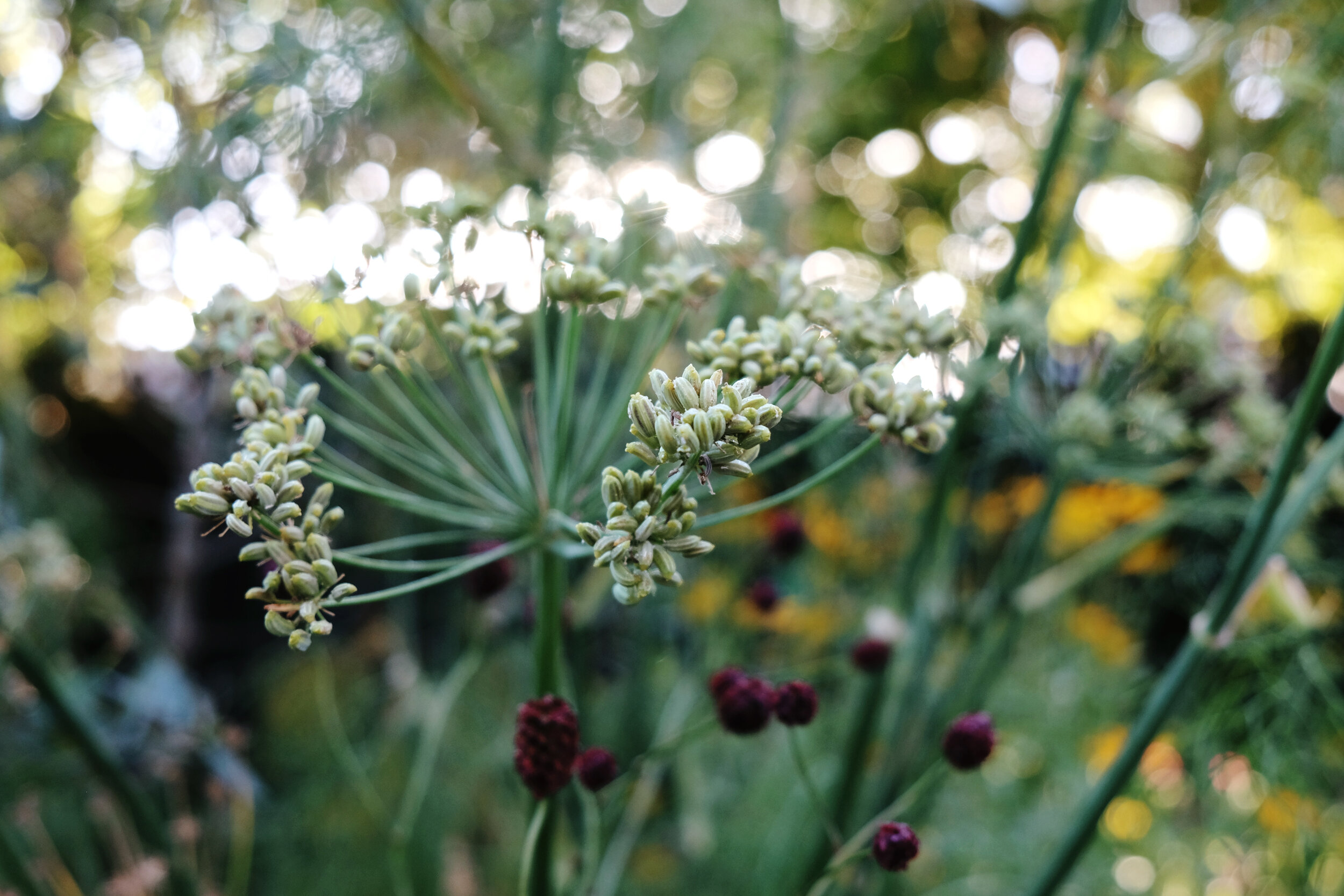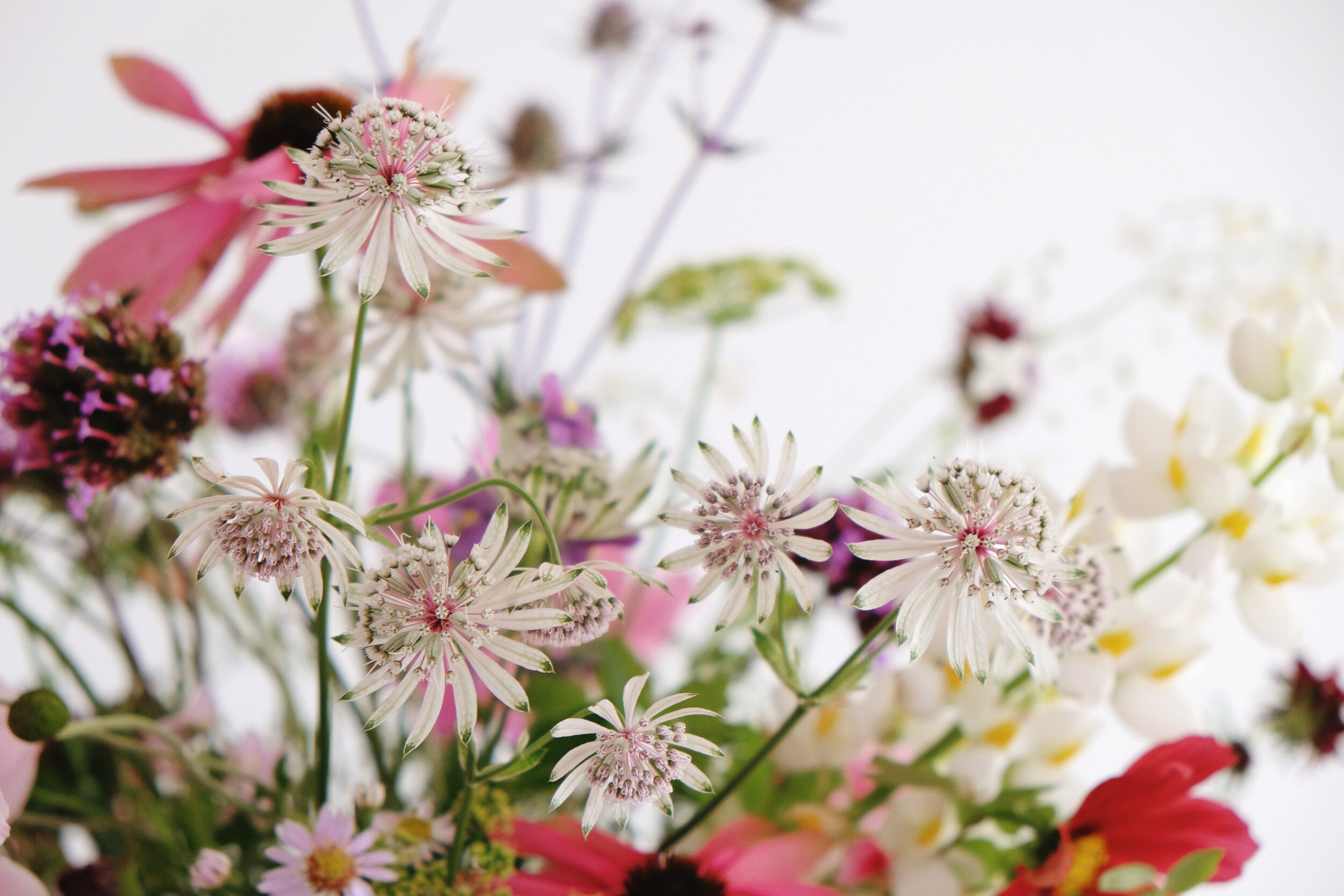The world of umbellifers
/As a never-ever grower, learning to garden feels like a giant undertaking.
Too much to learn, too much to retain, too much to be bothered with.
But once the bug has a grip on you and the wins start to outweigh the misses, you will discover the total delight of curation.
Picking and choosing which plants you’d like to plough your effort into and enabling what specimens you want to enjoy each season is truly rewarding – both visually and emotionally. Looking beyond colour to also explore shape and form is where you get to experiment and discover your green-thumbed creativity. As you learn, you’ll find combinations you love, appreciating plants for their foliage and blooms, right through to their seed heads.
One of my favourite forms to mix into my garden is the umbellifer – a flowering plant that belongs to the Apiaceae (celery) family.
With a membership of hundreds of genera and thousands of species, these plants are broadly characterised by their flowers that develop as “umbels” (umbrella-like). Bursting from the tip of a main stalk, small stems swoop upward, bearing tiny flowers that group together in a disc shape or sometimes slightly domed.
A 3 year old stand of fennel in my garden that I ruthlessly hack into and right down each year. This one collapses due to not enough thinning out during the growing season.
Fennel
Perhaps the most common umbellifers in our New Zealand gardens are the bolting blooms of our carrot, celery, parsley, parsnip and coriander crops. Not to mention the towering heads of fennel, both within bounds and roaming riverbeds in the wild. Poisonous hemlock is in the mix there too, posing as the more lovable Queen Anne’s lace, as are the sturdy giant heads of roadside angelica.
My personal favourites for garden and the vase are:
Fennel
Fennel would be my “gateway” umbellifer. I introduced it before I had any real recognition of the umbellifer family and, as a beginner, it quickly gave me the eager growth and blooms needed to raise my gardening confidence.
I grow the common perennial variety of Foeniculum vulgare, as opposed to Florence fennel with the edible bulb. Maturing to lofty heights of nearly 2 m with a bushy, bossy habit, I simply cut into the clump and thin it out during its most prolific growing season from spring into autumn. This allows other airy plants close by to weave through it and give the nice, wild feeling that I pursue.
With the knowledge that the plant will regenerate quickly, I harvest flowers liberally to enjoy inside. Fennel flowers are best picked when they are acid yellow/green or forming seeds to prevent wilting in the vase.
The remaining heads on the plant will develop and mature seeds that you can share with the birds, as well as harvest your pantry!
I give my plants a strong chop back as soon as its looking like the seeds are dropping, as I have learned from experience that they will likely get growing wherever they land.
HEAPS of fennel.
Fennel is one of my favourite blooms to pick and play with in arrangements. You need to wait until the flowers start turning a chartreuse green before picking, as early growth is very floppy!
Fennel brings the architecture and quirk to arrangements.
Fennel on its own. A chance for a tall gathering!
Fennel supporting its summer flowering friends in the garden.
Ripening fennel seeds
Astrantia
In great contrast to fennel, astrantia is a delightful, delicate perennial umbellifer with starry flowers that bring light and interest to partly shaded areas.
Commonly maturing to around 30 –60 cm over lovely fern-like foliage, varieties offer flowering options in a spectrum of plums through to white with dashes of green.
After a few years, I dig up and divide the clumps to create more plants with the excitement of enjoying further blooms from summer right through to late autumn.
They have a terrific vase life and truly belong in every flower bed!
Gorgeous astrantia
Astrantia in the garden where it thrives in part shade.
Parsley
I know that this might be a weird one, but its inclusion here is to help you find the silver lining in your parsley bolting to flower in the heat of summer.
Both my flat leaf and curly varieties have rewarded me with terrific little umbels that look sweet in the garden as well as performing incredibly well in a vase!
Perhaps don’t be so quick to cut blooming heads back this season, or at the very least, add them to mixed arrangements for quirky interest.
Parsley flower in a mixed garden arrangement, including astrantia.
Lovely little green parsley flower mixed with Japanese anemones, hollyhocks and cosmos.
Ammi majus
Arriving in gardens under many different monikers, including bishop’s flower and false Queen Anne’s lace, this is a beautiful cottage garden regular with large white, domed umbels.
Reaching up to 1.2 m high with feathery green foliage, it brings a softness to the middle or back of sunny garden beds. It is a favourite for picking and dries well too.
Technically an annual, in parts of New Zealand it might attempt to push through winter and into the following spring!
Ammi majus from The Joy Farmer
Long limbs of Ammi with other garden blooms from The Joy Farmer.
Pictured in the Wanaka home of Govino NZ/AU
Ammi majus and garden goodies from The Joy Farmer.
Orlaya
This is a magical, lacey umbellifer that I first saw thriving in the borders of Barewood Garden. In New Zealand, the most commonly available variety is Orlaya grandiflora “White Lace”.
Orlaya is easily grown from seed and has a penchant for gentle self-seeding as it comes to the end of its cycle. This romantic little annual will grow to around 75 cm high, given good sunlight.
I thoroughly enjoyed it in my garden last year and have my fingers crossed for some self-sown surprises.
It is a beautiful highlight within a mixed bed as much as it is in a mixed arrangement with a rewarding vase life.
Lovely lacey orlaya weaving through a border at Barewood Garden.
Orlaya bringing beautiful lightness to a bright garden posy.
This is an expanded version of the article featured in my Stuff ‘Homed’ gardening column for beginners , The Press, Dominion Post and other regional papers on September 30th 2021
All words and images are my own, taken in my home and garden in Christchurch, New Zealand unless otherwise captioned.



















